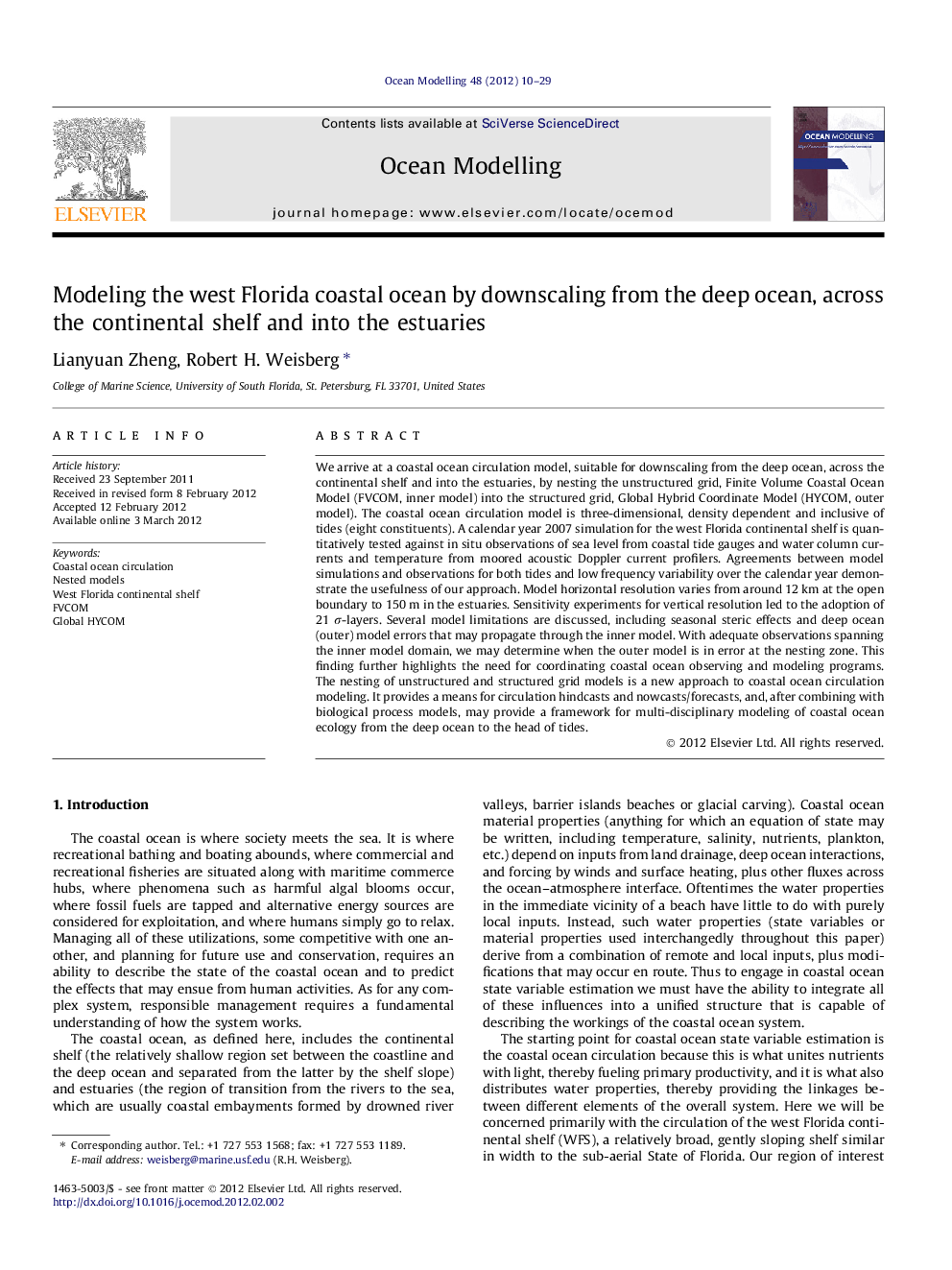| کد مقاله | کد نشریه | سال انتشار | مقاله انگلیسی | نسخه تمام متن |
|---|---|---|---|---|
| 4552209 | 1627795 | 2012 | 20 صفحه PDF | دانلود رایگان |

We arrive at a coastal ocean circulation model, suitable for downscaling from the deep ocean, across the continental shelf and into the estuaries, by nesting the unstructured grid, Finite Volume Coastal Ocean Model (FVCOM, inner model) into the structured grid, Global Hybrid Coordinate Model (HYCOM, outer model). The coastal ocean circulation model is three-dimensional, density dependent and inclusive of tides (eight constituents). A calendar year 2007 simulation for the west Florida continental shelf is quantitatively tested against in situ observations of sea level from coastal tide gauges and water column currents and temperature from moored acoustic Doppler current profilers. Agreements between model simulations and observations for both tides and low frequency variability over the calendar year demonstrate the usefulness of our approach. Model horizontal resolution varies from around 12 km at the open boundary to 150 m in the estuaries. Sensitivity experiments for vertical resolution led to the adoption of 21 σ-layers. Several model limitations are discussed, including seasonal steric effects and deep ocean (outer) model errors that may propagate through the inner model. With adequate observations spanning the inner model domain, we may determine when the outer model is in error at the nesting zone. This finding further highlights the need for coordinating coastal ocean observing and modeling programs. The nesting of unstructured and structured grid models is a new approach to coastal ocean circulation modeling. It provides a means for circulation hindcasts and nowcasts/forecasts, and, after combining with biological process models, may provide a framework for multi-disciplinary modeling of coastal ocean ecology from the deep ocean to the head of tides.
► FVCOM is nested in HYCOM to downscale from the deep ocean to the estuaries.
► A 2007 west Florida shelf simulation is tested against in situ observations.
► We highlight the need for coordinated coastal ocean observing and modeling programs.
► A backbone is provided for modeling ecology from the deep ocean to the head of tides.
Journal: Ocean Modelling - Volume 48, May 2012, Pages 10–29